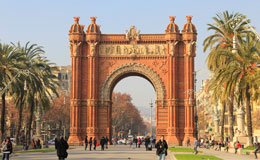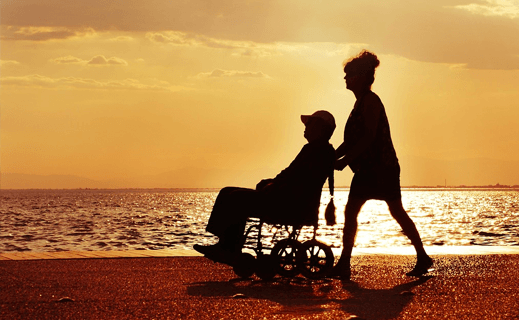Highlights of this tour
- The historic city center of Potsdam
- Dutch Quarter
- Glienicker Bridge
- Cecilienhof Castle or Sanssouci Park
This wheelchair accessible tour starts from Berlin and takes you to the area of Potsdam. With wheelchair adapted transport and a private guide, you experience a day full of culture and history. Discover the historic city center of Potsdam, the Dutch Quarter, and the Glienicker Bridge. Lastly, you decide if you want to visit the Cecilienhof Castle or Sanssouci Park. During this accessible tour, all the visits are outside.
In the second world war, the center of Potsdam was heavily bombed. After the war, the ruins in the period of the GDR were cleared. Not much is left of the beautiful buildings and palaces that you could find there before the war. Today, you can revisit many sights of Potsdam due to restorations. The Brandenburger Straße, Park Sanssouci, and the Dutch Quarter are famous sights you cannot miss. Besides that, you also have the St. Nikolai Church, Barberini, the Old Market / Landtag, and so much more to discover. The historic center of Potsdam is a place where you spend many hours.
In a part of the center of Potsdam, it sometimes feels as if you have ended up in an old Dutch place. It is no coincidence that this district is called the “Holländisches Viertel” or the Dutch Quarter. The neighborhood dates from the early 18th century when Frederick William I brought large groups of artisans from Holland to Potsdam. To make the workmen feel at home and to attract more workers, he made a Dutch architect build the neighborhood between 1733 and 1742. At the time, the Dutch quarter was not the most popular place, and the French, in particular, settled in the district. It was neglected during the Cold War. But at the end of the last century, after the fall of the Berlin Wall, the area was restored for the first time. Now it looks very accurate again.
During the Cold War, the Glienicker Bridge was used for spy exchanges. This bridge can be found on the border between West Berlin and the GDR and is a symbol of the Cold War. The Americans and East Germans / Soviets exchanged prisoners of war several times after spy covers were blown up. You can discover why this bridge was so special during this accessible tour.
The German Emperor Wilhelm II built the Cecilienhof Palace for his son, Crown Prince Wilhelm and his wife, Cecilie. The Hohenzollerns built several complexes, but this was the last palace they constructed.
The palace’s design was based on the English Tudor style, with half-timbered walls, brick, and numerous ornamented mantelpieces. The use of traditional building materials made the building fit nicely into its surroundings. To make the size of the 176-room palace less noticeable, the building was split into sections that were cleverly grouped around several squares. Because of the Potsdam Conference in 1945, the palace became world-famous for being hosted there.
The Park Sanssouci in Potsdam is located outside the city of Berlin and provides a lot of peace, quiet, and greenery. It is a gigantic, and beautiful park, full of magnificent palaces, temples and tea houses. With over 289 hectares, Park Sanssouci in Potsdam is enormous. The Prussian crown prince and later King Frederick II wanted to build a summer palace outside of Berlin. His marriage was terrible, and he wanted a place where he could do his thing without having her around. It became a sanctuary where he could escape. He called it Sanssouci, after “Sans soucis,” which means “without worries” in French. Frederick II continued to expand the park until 1772, with gardens, temples, and other buildings. Thus, Sanssouci became his favorite place of residence over the years. His wife had only been there twice in her life.

“Just came back from Spain. I trusted DAT to do our hotels, transportation and tour arrangements. I will give them 5 stars!!!!!…” Read more

“I just finished a tour in Athens with Mirjam’s company, DAT. They were great. The guide was very knowledgeable…” Read more

“so helpful! when faced with the mobility issues you guys are doing great at holding our hands through the process x”

“…I am traveling with a group of handicapped people and taken some of their tours, but yours are MUCH better…” Read more